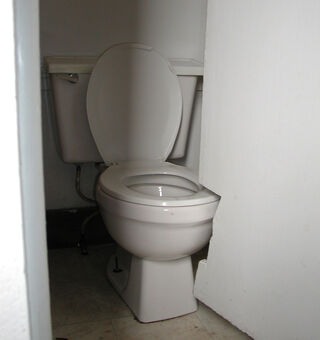Cognition
To Avoid Thinking Hard, We Will Endure Anything—Even Pain
A study shows humans willingly choose physical pain over difficult mental tasks.
Updated September 12, 2023 Reviewed by Ekua Hagan
Key points
- Thinking requires sustained attention and takes up considerable metabolic resources.
- On a day-to-day level, people tend to discount the effort needed to pay attention and think.
- A 2020 study suggests that thinking hard can actually be more unpleasant than real, physical pain.

It’s easy to laugh at human thoughtlessness. Whether it's poor bathroom design choices, gender-reveal explosions that start wildfires, or this guy, much pain and trouble can be attributed to not thinking things through.
Thinking takes real effort. It requires sustained attention. Scientists have known for some time that focusing your mind consumes considerable metabolic resources. But in our day-to-day lives, we discount the effort needed to pay attention and think because it doesn’t feel as physically strenuous as, say, lifting a 50-pound weight.
Research on the effort of focusing vs. pain
Remarkably, a 2020 study by psychology researchers at McGill University suggests that thinking hard can actually be more unpleasant than real, physical pain.
The researchers invited 39 healthy young adults from the university community into the lab. First, they determined each person's sensitivity to pain using a hot stimulus on their forearm. The stimulus, delivered by an electric heater, could be as hot as 120 degrees Fahrenheit, which was sufficient for many to rate the pain as very intense.

Then, they moved on to the main experiment. In each trial, the participant was given a choice: Get zapped with the electric heater at different levels of pain, or do a demanding mental task involving attention and memory. The mental task, called the N-back task, is widely used in cognitive neuroscience and other areas. You are shown a series of letters on a screen. Each one is visible for half a second, followed by a pause of up to two seconds. Initially, the task is to judge whether a given letter is the same as the one presented one letter ago. This continues for each of the letters seen in sequence.
Then the task gets harder: You have to judge whether a given letter is the same as the one presented two letters ago, then three letters ago, and so on.
The N-back task is useful because the degree of difficulty can be systematically varied. It requires a fairly naturalistic combination of memory and attention. This is to say it is a good test of our ability to think hard: It involves paying attention to "now"—the letter we see—and integrating information from the recent past—the letter seen N letters ago. It also requires us to quickly make a decision (same or different) and to do so again and again.
The McGill researchers found that once participants had some experience of the N-back task, they much preferred guaranteed pain. In the 3-back condition—where the participant is required to compare a presented letter to one seen three letters previously—people much preferred low or moderate pain. Even when the pain was quite intense, it was still preferable in some circumstances. In the 4-back condition, around a quarter of participants skipped the mental task and chose to receive pain at a level they considered 80 percent as painful as one they judged to be extremely intense.
Given these results, we should acknowledge that focusing and making decisions is hard, and that even thoughtful people will do almost anything to escape such tasks—they will even accept guaranteed pain.
People may even prefer physical pain to doing nothing at all
The McGill study also hearkens back to an earlier study of pain by researchers at the University of Virginia and Harvard University, led by Timothy D. Wilson (though this work is not cited by the McGill researchers).
Wilson and colleagues simply had participants sit in a room and do nothing. All they had to do was sit alone with their thoughts. But when given the chance to do something painful instead—such as administer an electric shock to their ankle by pushing a button—some 67% of men and 25% of women chose to zap themselves at least once. One male participant shocked himself 190 times in 15 minutes.
So physical pain is not only preferable to thinking through a difficult cognitive task. In many cases it is even preferable to daydreaming. In the end, the poet John Milton, quoted in the paper by Wilson and colleagues, may have said it best:
The mind is its own place, and in it self/
Can make a Heav'n of Hell, a Hell of Heav'n
Copyright © 2021 Daniel Graham. Unauthorized reproduction of any content on this page is forbidden. For reprint requests, email reprints@internetinyourhead.com
References
Vogel, T. A., Savelson, Z. M., Otto, A. R., & Roy, M. (2020). Forced choices reveal a trade-off between cognitive effort and physical pain. ELife, 9, e59410.
Wilson, T. D., Reinhard, D. A., Westgate, E. C., Gilbert, D. T., Ellerbeck, N., Hahn, C., ... & Shaked, A. (2014). Just think: The challenges of the disengaged mind. Science, 345(6192), 75-77.


